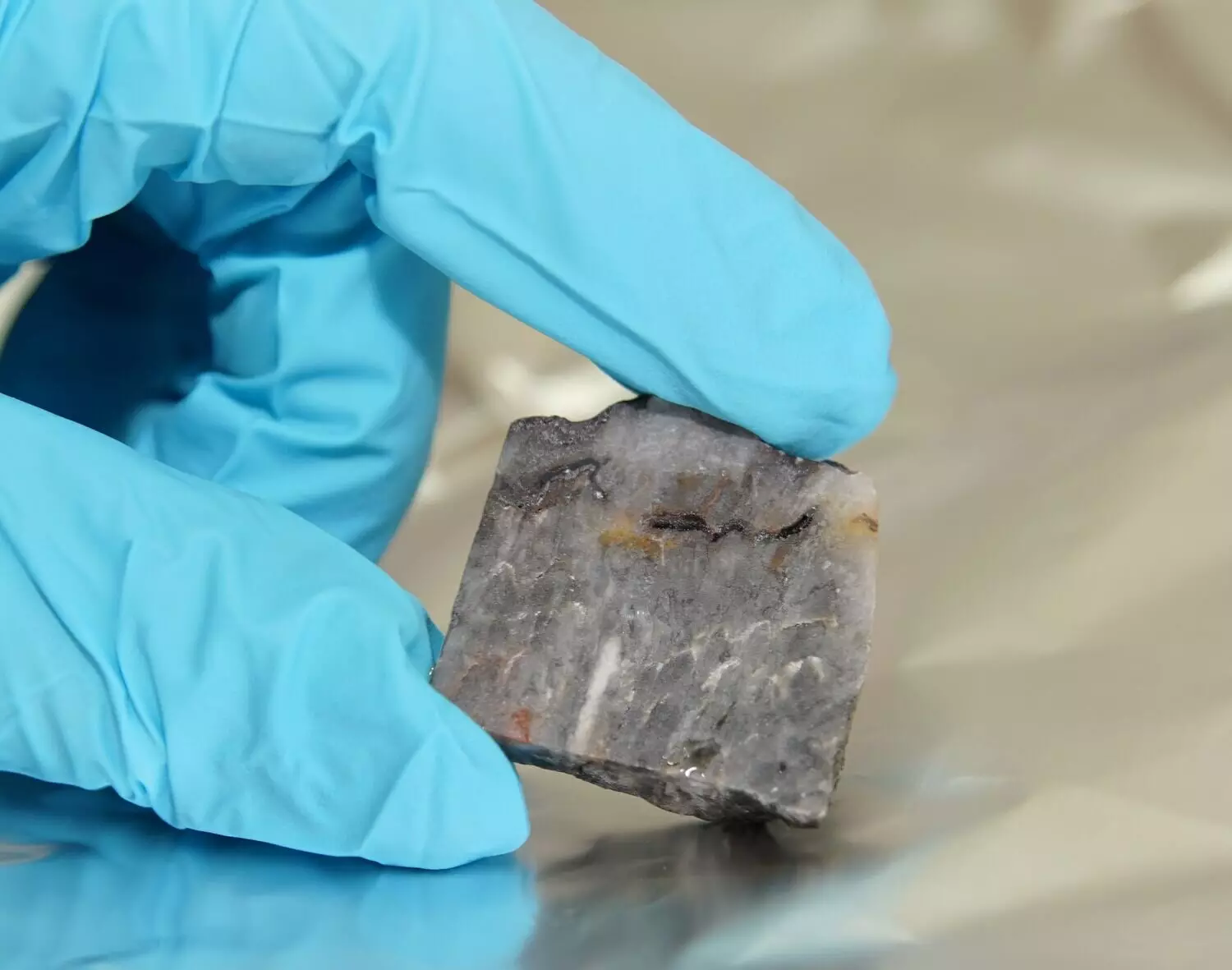One of the few places on Earth where researchers can analyze rocks from the early Earth is the Pilbara Craton in Western Australia. These rocks, dating back around 3.5 billion years, contain traces of the microorganisms that inhabited the planet during that time. A recent study led by the University of Göttingen has provided new insights into the formation and composition of this ancient biomass, offering a glimpse into Earth’s earliest ecosystems.
The research team utilized advanced techniques such as nuclear magnetic resonance spectroscopy (NMR) and near-edge X-ray Absorption Fine Structure (NEXAFS) to analyze carbonaceous particles present in rocks composed of barium sulfate. Through these methods, scientists were able to uncover crucial information about the structure of these microscopic particles, confirming their biological origin. It is believed that these particles were deposited as sediment in the body of water within a “caldera”, a large hollow formed after volcanic activity. Some of the particles underwent transportation and alteration by hydrothermal waters beneath the volcano’s surface, indicating a complex history of sediment deposition.
By examining different carbon isotopes, the researchers determined that various types of microorganisms coexisted in the vicinity of volcanic activity during that time period. These microorganisms bore similarities to those found today in Icelandic geysers and hot springs in Yellowstone National Park. The study not only provides insights into the ancient ecosystems of Earth but also offers valuable methodological advancements in the field. Lena Weimann, the first author of the study from the Göttingen University’s Geosciences Centre, expressed excitement about the ability to combine a variety of high-resolution techniques to unravel the history of organic particle deposition and their origins.
The discovery of ancient biomass in the rocks of the Pilbara Craton sheds light on the early stages of life on Earth and the formation of ecosystems. It offers a glimpse into the dynamic processes that shaped the planet billions of years ago, providing valuable information for understanding the evolution of life on Earth. This research not only deepens our knowledge of the past but also opens up new avenues for further exploration into the origins of life and the diversity of ancient microorganisms.
The study of ancient biomass in rocks from the early Earth offers valuable insights into the planet’s earliest ecosystems. By utilizing advanced techniques and analytical methods, researchers have been able to uncover the complex history of these microorganisms and their interactions with volcanic environments. This research not only enhances our understanding of Earth’s past but also contributes to the development of innovative approaches in the field of geoscience.


Leave a Reply